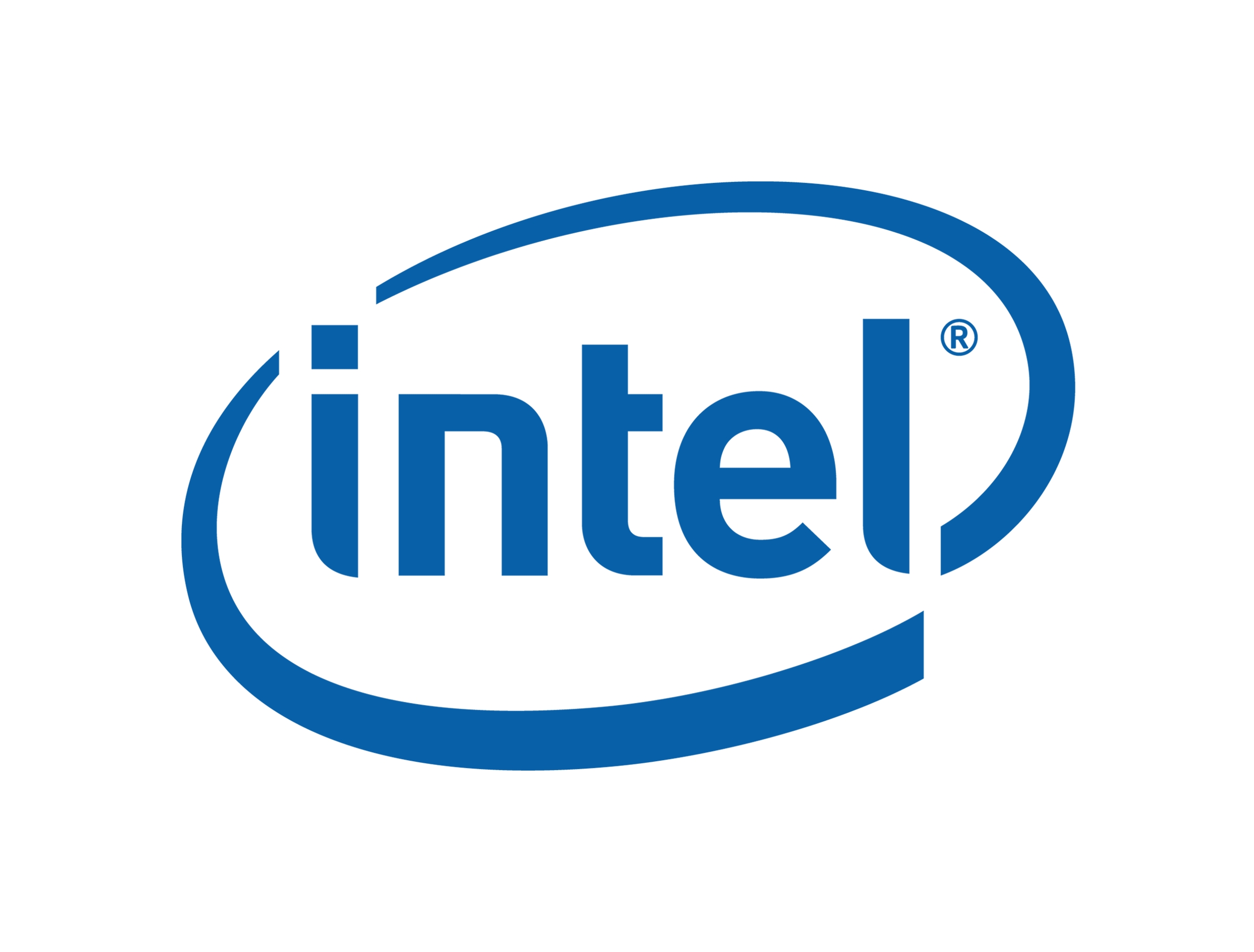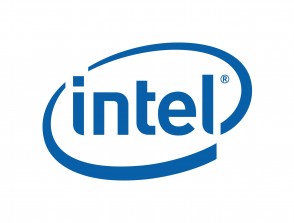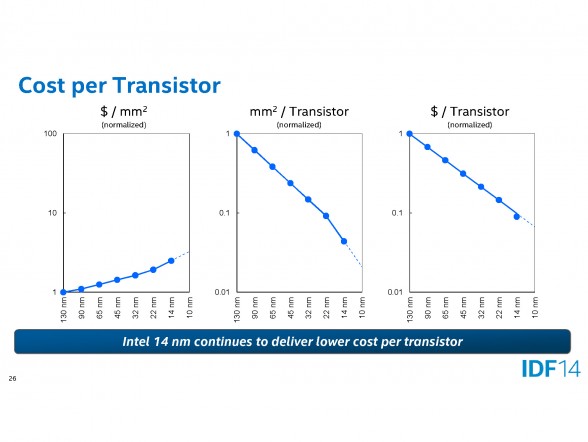With ISSCC (International Solid-State Circuits Conference) coming up this week and numerous Intel researchers slated to present cutting edge technologies in silicon manufacturing, Intel Senior Fellow for Logic Technology Development, Mark Bohr, recently gave a brief overview of Intel’s developments and future roadmap to analysts and media.
In line with what was presented at IDF 2014, Bohr reiterates that scaling will continue to produce the cost reduction that justifies investment into the development of even smaller feature sizes. Not much of a surprise there. Intel was already slated to begin production of chips at the 10nm feature size.
What is surprising however is that Bohr also believes that Intel has the capability to manufacture at 7nm without the need for next generation manufacturing technologies, although he did not share specific details on how Intel will manage to achieve this. Previously, it was believed that scaling beyond 10nm would require EUV or some form of expensive, complex next generation silicon manufacturing technology.
Our Take
Bohr knows what he’s talking about, so I’m ecstatic to hear that Intel can do 7nm, thus securing an extension of silicon advancements and Moore’s Law for a few more years. Although we’re just barely coming up to the 14nm feature size with Broadwell, there’s still no concrete answer to a next generation manufacturing technology that can produce high performance, cost effective chips of the future. If Moore’s Law is to continue to hold true, Intel should be introducing 10nm in 2016 and 7nm in 2018 which doesn’t give us a whole lot of time to perfect a next generation manufacturing technology.
Source: PCWorld







